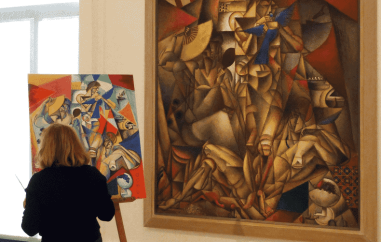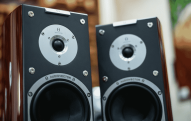St John Passion at the Matthäuskirche on Good Friday
Each year during Holy Week, many churches in and around Munich perform one of the Bach Passions or a similarly sacred work. The one at the Matthäuskirche (at Sendlingertor) was performed by the Münchner MotettenChor and the Residenz Orchester München under the direction of Hayko Siemens on Good Friday 6 April 2012. From multiple sources, I had heard that this was one of the best performances on offer in Munich this week. I cannot say I was disappointed.
As with many Bach works, the most interesting thing is not always the melody in the highest voice. Instead, it is the interplay of the inner voices not only with the sopranos but with each other that makes Bach's music so satisfying. This was immediately evident even in the opening Chorus 'Herr, unser Herrscher'. The clear and crisp counterpoint in the first moments of the performance indicated there were good things to come.
The acoustics in many churches are notoriously muddy, which makes it difficult for the listener to distinguish individual vocal lines. However, the musicians did an admirable job of compensating for this. The alto and tenor lines shone through nicely.
The Recitative is often not the most compelling part of an Oratorio. Although the solo voices were excellent, particularly that of the tenor Andrew Lepri Meyer, these are usually the sections that lose my interest. But because the most crucial parts of the story are conveyed in the Recitative, these sections are undoubtedly necessary.
Despite the extraordinary singing of alto Regine Jurda, the orchestra was a bit overpowering in several passages of the initial alto Aria. Much later in the piece, Ms Jurda sang another alto Aria 'Es ist vollbracht' in which she was accompanied by much lighter orchestration and an exquisitely performed viola da gamba solo.
The soprano Magdalena Hinterdobler's voice soared above the strings in both of her Arias. In the first she and the flute traded melodies, while the Aria near the end was accompanied by oboes, flutes and strings. In the former Aria, there were times when the voice and flute together took on a transcendent quality that almost took the listener to another plane.
And then there were the Chorales. These were the highpoint of the performance for me. There is something so pure and earnest in Bach's vocal scoring. The practice of singing the second verse of the Chorale dramatically softer makes the listener sit up and lean forward in the pew. Once again, the clarity of the inner voices made the experience so rewarding.
The same tenor who sang the Evangelist part sang the tenor Arias, and although Mr Lepri Meyer ran into some of the same problems that the alto had in the earlier Aria (beautiful singing that was sometimes covered by the orchestra), by the time we reached the Arioso 'Mein Herz, in dem die ganze Welt bei Jesu Leiden gleichfalls leidet' the tenor's voice easily filled the church. This could easily be the emotional pinnacle of the St John Passion, and yet the final soprano Aria somehow suspended that moment for just a little while longer.
If those Arias took the listener to a state of flight, then the Chorale 'Ruht Wohl, ihr heiligen Gebeine' brought everything softly back down to earth. The flowering counterpoint bloomed and there were even a few moments of a Capella bliss. With this Bach gently prepares for a return to the world after such an ethereal experience.
But not before one final Chorale 'Ach Herr, lass dein lieb Engelein' in which the Münchner MotettenChor took one final opportunity to display the subtlety that had made the evening so enjoyable.















































